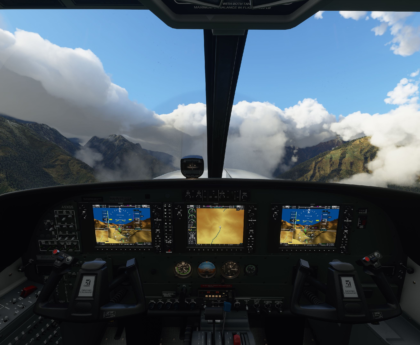Embarking on the journey of flight simulation can be an exciting and rewarding experience. To fully immerse yourself in the virtual skies, having the right flight simulator hardware is essential. This beginner’s guide aims to provide you with a clear understanding of the essential hardware components you need to kick-start your flight simulation adventure, whether you’re a casual aviation enthusiast or an aspiring virtual pilot.
- Flight Controls: The Heart of Your Setup
At the core of your flight simulator hardware setup are the flight controls. These include yokes and joysticks, which mimic the control inputs of real aircraft. Yokes are reminiscent of the control wheel in airplanes and are ideal for flying fixed-wing aircraft. Joysticks, on the other hand, offer versatility and are suitable for a wide range of aircraft, including helicopters. Choose the control type that aligns with your aircraft preferences.
- Rudder Pedals: Navigating the Skies
Rudder pedals simulate the aircraft’s yaw movement, allowing you to control its side-to-side motion. For a more realistic flight experience, invest in rudder pedals. They provide finer control during takeoffs, landings, and coordinated turns, enhancing the authenticity of your flights.
- Throttle Controls: Mastering Engine Power
Throttle controls are crucial for regulating engine power, which directly affects your aircraft’s speed and altitude. Depending on your budget and preference, you can opt for a separate throttle quadrant with levers for throttle, propeller, and mixture controls, or a single throttle lever on your yoke or joystick.
- Computer Hardware: Powering Your Simulations
A robust computer is the backbone of your flight simulation setup. Ensure that your computer meets or exceeds the recommended system requirements of your chosen flight simulator software. A powerful graphics card, sufficient RAM, and a fast processor are key components for delivering smooth and visually stunning flight experiences.
- Monitor Setup or VR Headset: Choosing Your Visual Experience
Decide whether you want a multi-monitor setup or a virtual reality (VR) headset to enhance your visual experience. Multi-monitor setups provide a wider field of view, while VR headsets offer an immersive feeling of being inside the cockpit. Ensure your computer can handle the increased graphics demands of multiple displays or VR.
- Mounting and Ergonomics: Comfort Matters
Properly positioning and mounting your flight controls is essential for comfortable and realistic flying. Invest in a sturdy desk or mount to prevent unwanted movement during flights. Adjust the height and angle of your controls to match your seating position for a comfortable and ergonomic setup.
Conclusion
Embarking on your flight simulation journey is an adventure that begins with the right hardware essentials. Flight controls, rudder pedals, throttle controls, a powerful computer, a well-designed monitor setup or VR headset, and ergonomic considerations are all integral parts of your setup. By choosing the hardware that aligns with your preferences and needs, you’ll be well-equipped to explore the virtual skies and experience the joy of flying from the comfort of your own home.





